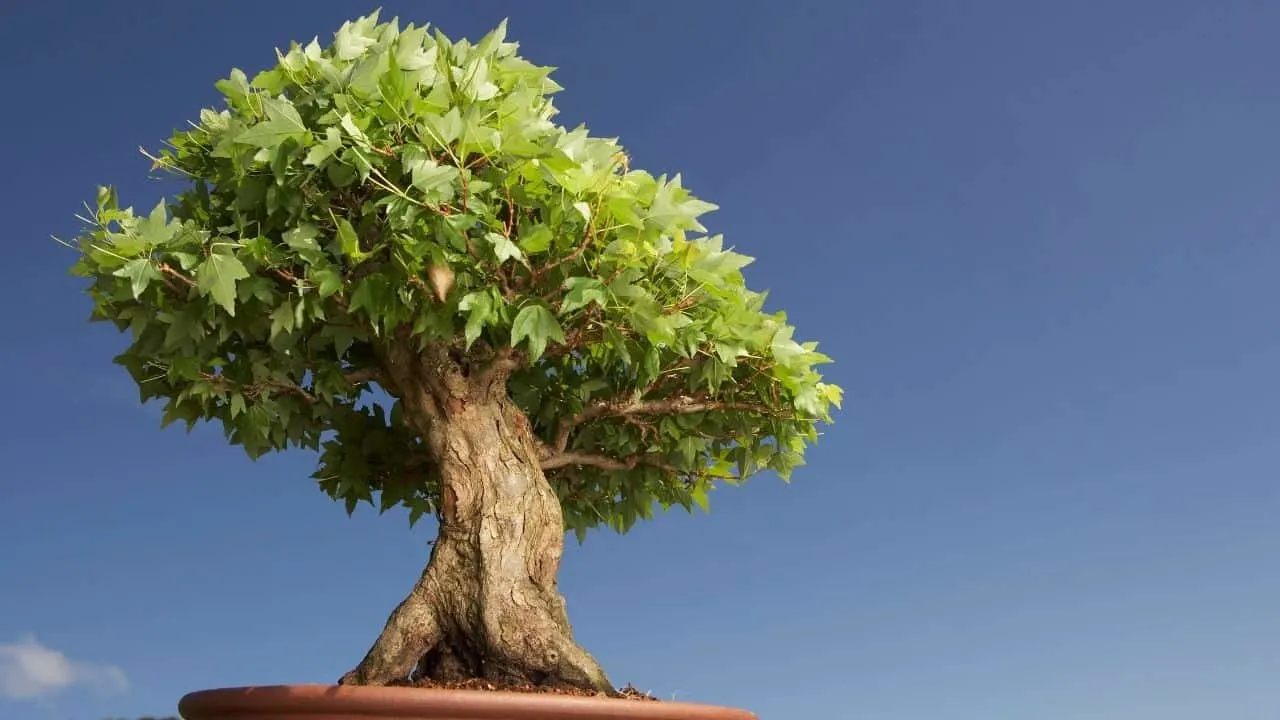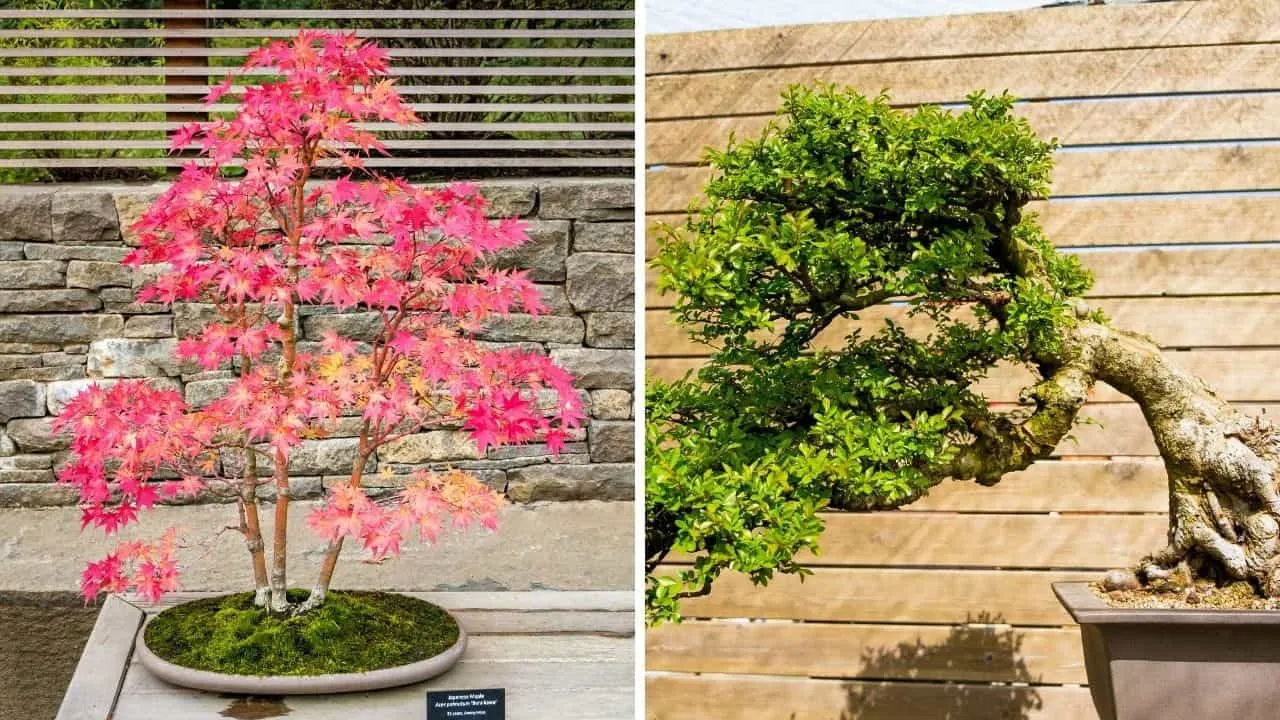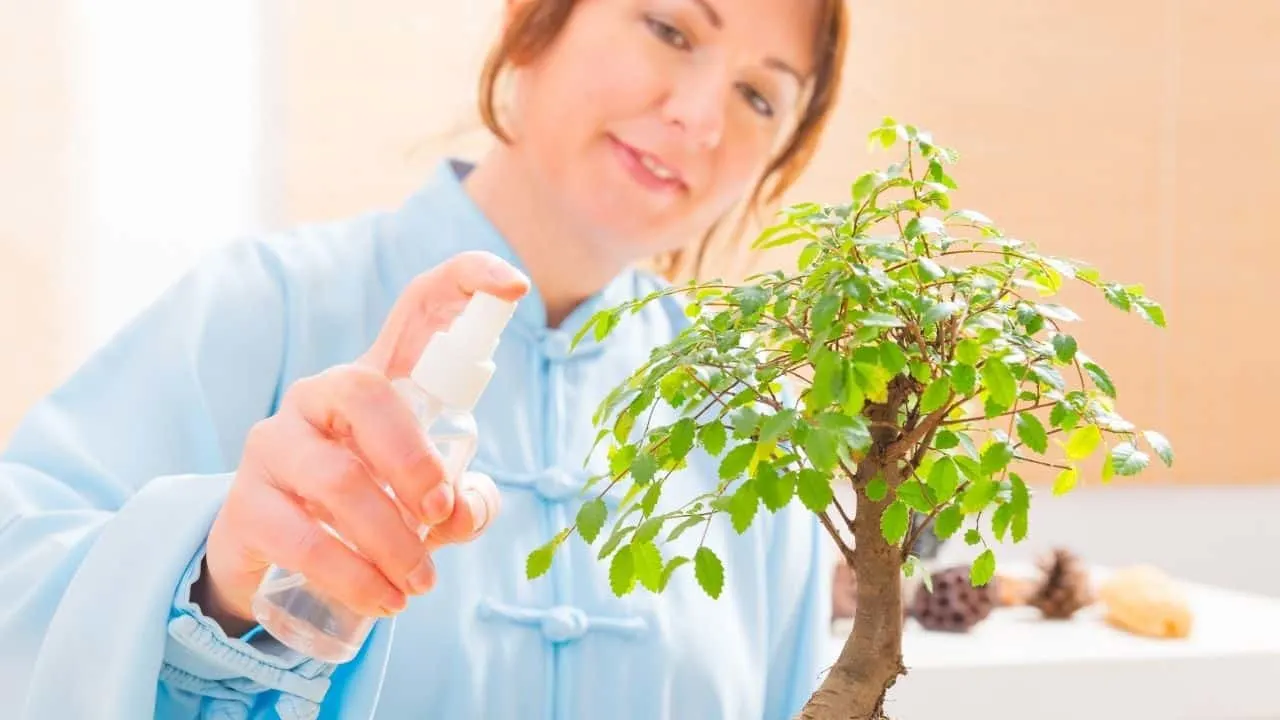How Long does it take for a Bonsai tree to grow? Growing a bonsai requires great patience, this is for sure.
This isn’t a hobby that will net you instant results.
In fact, you could say that initially, rearing a bonsai is rivaled in boredom only by watching paint dry.
Still, if you stick with it, eventually growing a bonsai becomes amazingly rewarding. You get to watch “your little friend” blossom into a mature, healthy, incredible little tree.
Well, you’re probably thinking, that’s all very fine and dandy, but how long are you going to have to wait for this golden dawn?
I’ll discuss how long bonsai trees take to grow, what factors affect them, and give some tips to help you make it happen quicker.
Table of Contents
How Long Does it Take for a Bonsai Tree to Grow?
From a seed to a mature tree, it takes bonsais between 10-15 years. In extreme cases, however, it can take up to 30 years. From seed to sapling takes a typical bonsai about 4 years. From there – sapling to mature tree – bonsais can typically take another 6-11 years or even another 26 years in some species.
The Life Cycle of Bonsai Trees

The Life Cycle of Bonsai Trees
How long bonsai trees usually live in nature gives us a reliable indication of how long we can expect them to last when we culture them.
A Ficus tree can live for over a hundred years, so there’s no good reason why your bonsai shouldn’t be able to do the same. It all depends on how well it is cared for and provided with the necessary nutrients.
In fact, bonsais are believed to live longer than their natural counterparts. This belief stems from the fact that home-grown bonsais are better cared for and treated with kind regard, which gives them a greater chance of survival.
Bonsais kept indoors don’t have to worry about vermin or lightning.
It can take slow-growing species 20-30 years to mature before you can begin a proper design. Fast-growing species usually take between 5 and 15 years to grow.
Tip: When buying a bonsai, try to get a species in the 10-year range. Such trees will have a greater chance of survival, and you’ll get more value for your money.
Don’t blame yourself if your young bonsai only lasted for a few months. Bonsais can be so “scared of changing conditions” that they eventually die!
Some species are not happy to move, especially if it was propagated or grown elsewhere before you acquired it.
Factors Changing the Rate of Growth of Bonsai Trees
It all depends on where the tree is in its growth cycle when you receive it. It can take five years to start pruning the tree or work on its shape if you propagate it from a seed.
While developing a cutting can speed up the process, it will also depend on the trunk’s thickness and whether or not the original tree flowers.
You can also buy a bonsai that’s already grown. As bonsais are easier to shape, wire and prune, I recommend one that is five to ten years old.
At that age, the tree is more likely to flower and fruit.
If you start with cuttings, the tree will develop rapidly in its first year. Absorbing as many nutrients as possible, branches, roots, and leaves will grow vigorously.
However, as the bonsai develops, you will notice a marked slowing down in its growth rate.
Effective Maintenance
Pruning old, dying leaves give the bonsai tree a better chance of developing new growth. Instead of sending nutrients and energy to old branches, the bonsai tree will focus on creating new shoots.
It may take longer for it to expand if you leave it alone to grow naturally.
Nutrition
Bonsai trees rely on you to provide food. It lives in a container and doesn’t have the same access to nutrients or trace elements as in the garden.
It will need to be fed during spring and summer.
You will see rapid growth in the first few years if you give it enough food. You don’t have to stop fertilizing in autumn.
Some trees keep the carbohydrates for winter. It’s crucial to provide the right minerals for your tree.
Space for Growth
A bonsai collection can look great in your home. However, it is best not to cramp the trees in tiny spaces.
It is important that the foliage has enough space to grow and receive sunlight. This can also impact moisture absorption.
It is possible to extend the life span of your tree by making sure there are no pests, animals, or diseases that can affect the tree.
Species
The species is another factor that can significantly impact the time it takes for a bonsai tree to grow.
Japanese Maples develop quickly (that is, “quickly” in terms of bonsai snail-paced growth), while Chinese Elms take a little longer to grow.

Japanese Maple and Chinese Elm
To find out if your plant is growing as fast or slow as you expect, it’s a good idea to do extensive research before purchasing it.
The Elements
Bonsai trees need many elements for their healthy development. They need sunlight to survive, regardless of whether they’re placed indoors or outside. (This is a common mistake made by beginners who place bonsais in direct sunlight when the plant may prefer afternoon shade or morning light.)
It’s vital to water your bonsai. It will die if it doesn’t get enough of this vital liquid.

Watering a Bonsai
To ensure that the soil receives sufficient moisture throughout the year, you will need to keep an eye on its moisture levels.
Always ensure the tree has enough humidity. To help, you can mist the tree or use a humidity tray.
Frequently Asked Questions about How Long it Takes for a Bonsai Tree to Grow
When I plant a seed, how long will it take before I have a bonsai tree?
You will need to wait around four years to propagate a bonsai seed. Then you can start doing any meaningful work. If you take care of it properly, it can take as long as fifteen years to mature. It also depends on many factors, such as its species, what nutrients it is fed, and where it is placed.
When should I expect to see fresh leaves on my new bonsai?
It all depends on the season, water, sunlight, and nutritional conditions. In spring and summer, new bonsai should produce new leaves in two to four weeks. Winter will take longer.
Afterword: How Long Does it Take for a Bonsai Tree to Grow
Keep a watchful eye on your tree’s health. It will show signs that it is experiencing difficulties, difficulties which can slow down its development.
You might see signs of falling, brown leaves, markings, pests, deformed roots, or mildew.
Obviously, waiting for your bonsai tree to mature can seem like an eternity. Although there are some things you can do to speed up the process, the real joy actually lies in the experience of watching your bonsai grow.

Daniel has been a plant enthusiast for over 20 years. He owns hundreds of houseplants and prepares for the chili growing seasons yearly with great anticipation. His favorite plants are plant species in the Araceae family, such as Monstera, Philodendron, and Anthurium. He also loves gardening and is growing hot peppers, tomatoes, and many more vegetables.


